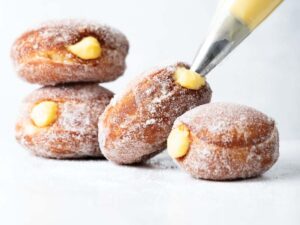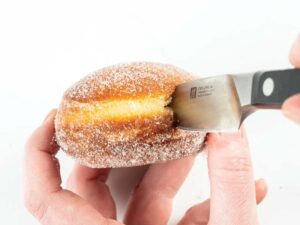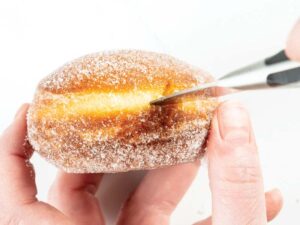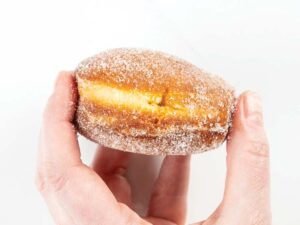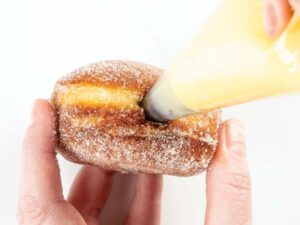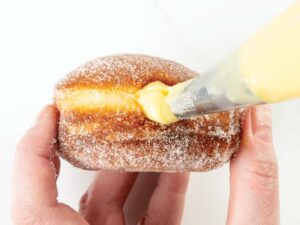In a small bowl, stir together warm milk, yeast, and 1 teaspoon (4 grams) sugar until well combined. Cover and let stand until foamy, about 10 minutes.
In the bowl of a stand mixer, whisk together 2 cups (250 grams) flour, salt, and remaining ½ cup (100 grams) sugar by hand. Add yeast mixture; using the paddle attachment, beat at low speed until combined. Add egg, egg yolk, vanilla, and coconut extract (if using), beating until combined. With mixer on low speed, gradually add remaining 1⅔ cups (208 grams) flour, beating just until dough comes together and stopping to scrape paddle and bottom and sides of bowl.
Switch to the dough hook attachment. With mixer on low speed, add butter, one cube at a time, beating until combined after each addition. Beat until dough is elastic and smooth, 8 to 10 minutes.
Spray a large bowl with baking spray. Place dough in bowl, turning to grease top. Cover and refrigerate overnight. (Alternatively, cover and let rise in a warm, draft-free place [75°F/24°C] until doubled in size, 2 to 3 hours.)
Spray baking sheets with cooking spray. Cut 14 (5-inch) squares of parchment paper, and place on prepared pans.
Turn out dough onto a lightly floured surface, and roll to ½-inch thickness. Using a 3x2½-inch oval or 3-inch round cutter dipped in flour, cut dough. Gently transfer cut dough to prepared parchment squares, spacing at least 2 inches apart.
Reroll scraps; let dough stand for 10 minutes. Cut dough, and place on prepared parchment squares. (Discard any remaining dough scraps.) Cover with plastic wrap, and let rise in a warm, draft-free place (75°F/24°C) until puffed, about 1 hour (or about 1½ hours if your dough was previously refrigerated).
In a 4- to 6-quart cast-iron Dutch oven or other large heavy-bottomed saucepan, pour oil to a depth of 2 inches, and heat over medium heat until a deep-fry thermometer registers 350°F (180°C). Line a rimmed baking sheet with paper towels.
Using parchment paper to pick up doughnuts, transfer doughnuts in batches of 2 to 3 to hot oil, letting doughnuts gently fall off parchment into oil. (Do not place parchment paper in oil.) Fry doughnuts in batches until golden brown, 1 to 2 minutes per side. Remove doughnuts from oil using a spider strainer or slotted spoon, and let drain on prepared pan. Dredge warm doughnuts in sugar to coat.
Spoon Haupia Filling into a pastry bag fitted with a medium round piping tip (Ateco #803).
Using a small paring knife, create a hole in the side of each doughnut; add Haupia Filling as desired. Best served same day as made. Refrigerate in an airtight container for up to 2 days.


